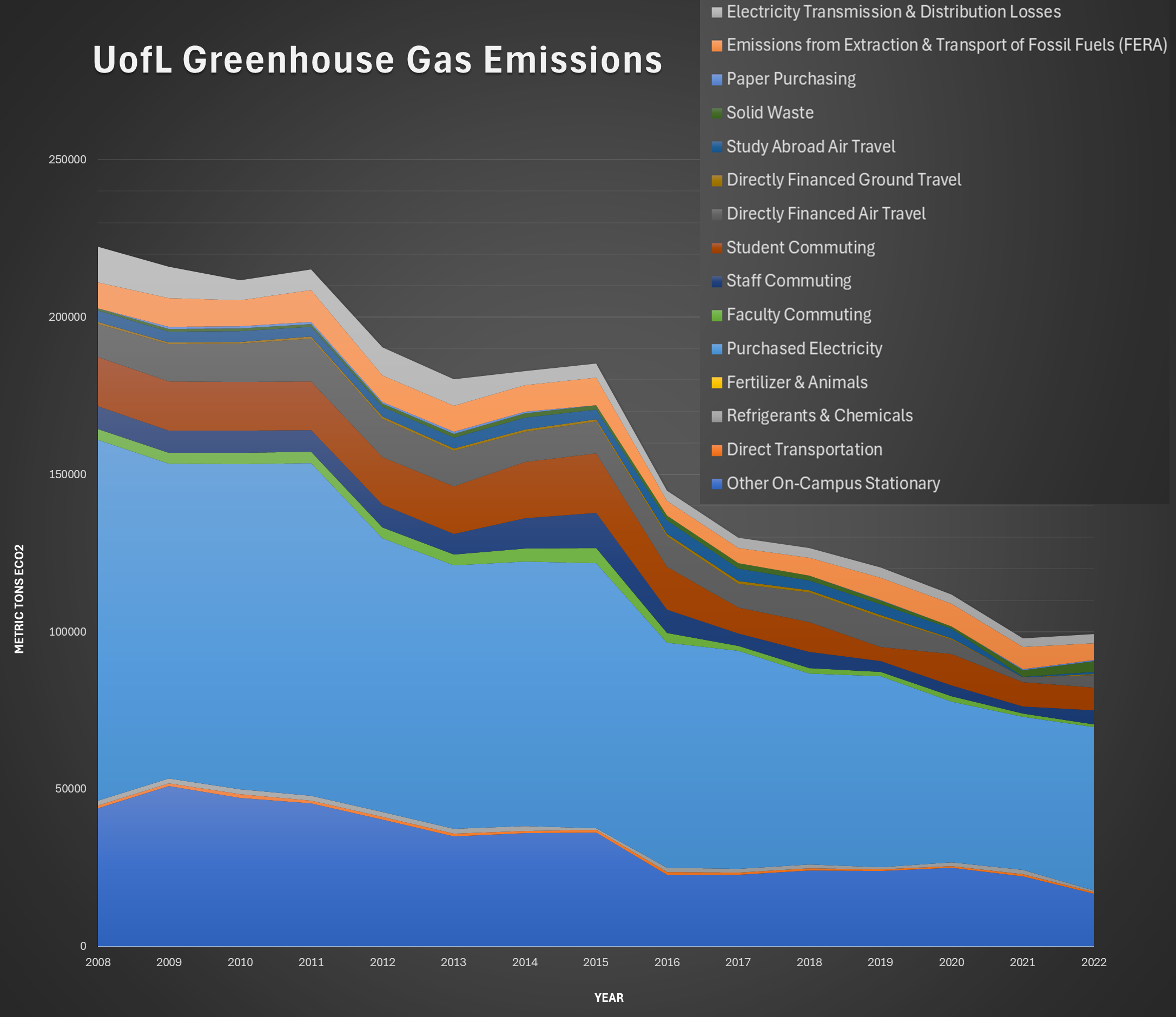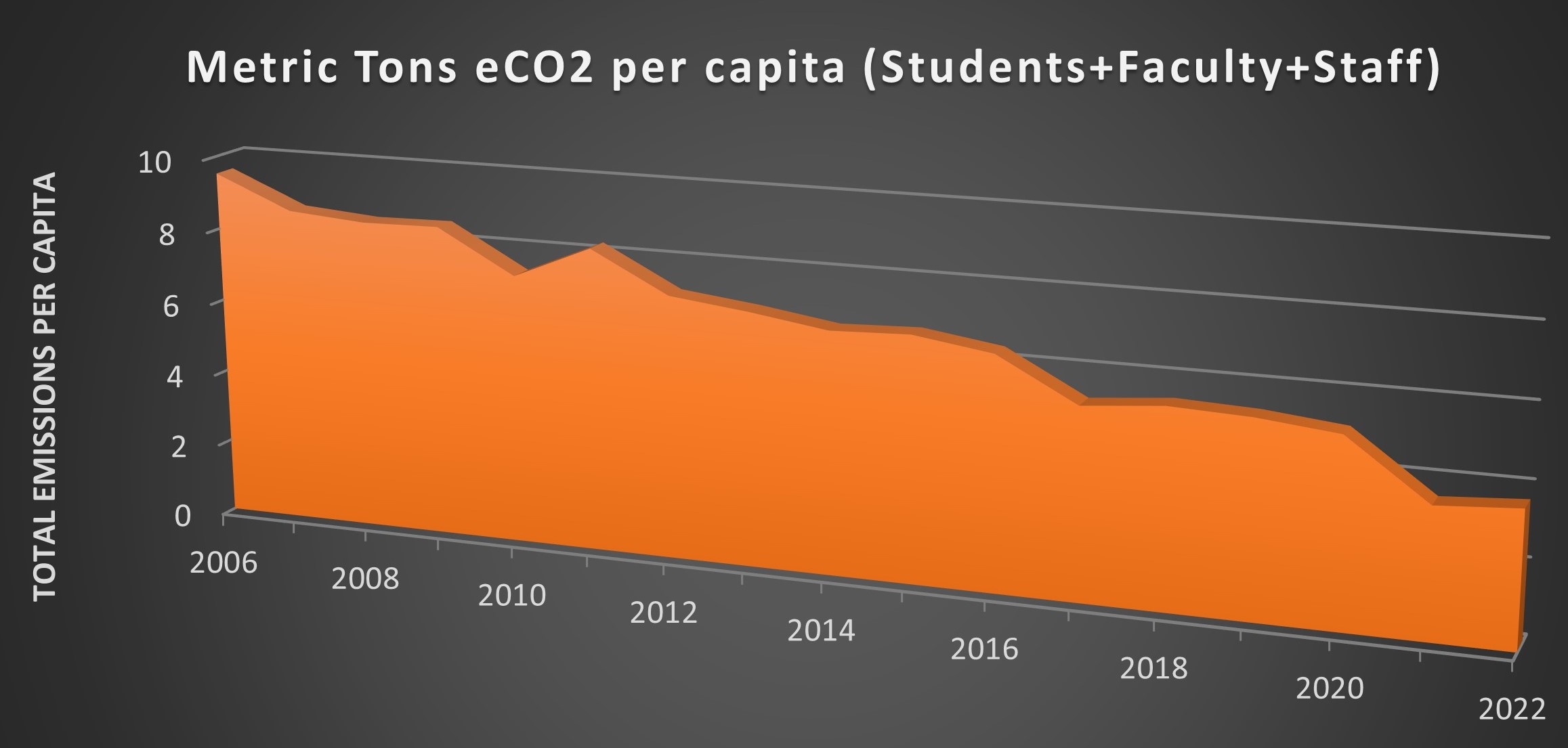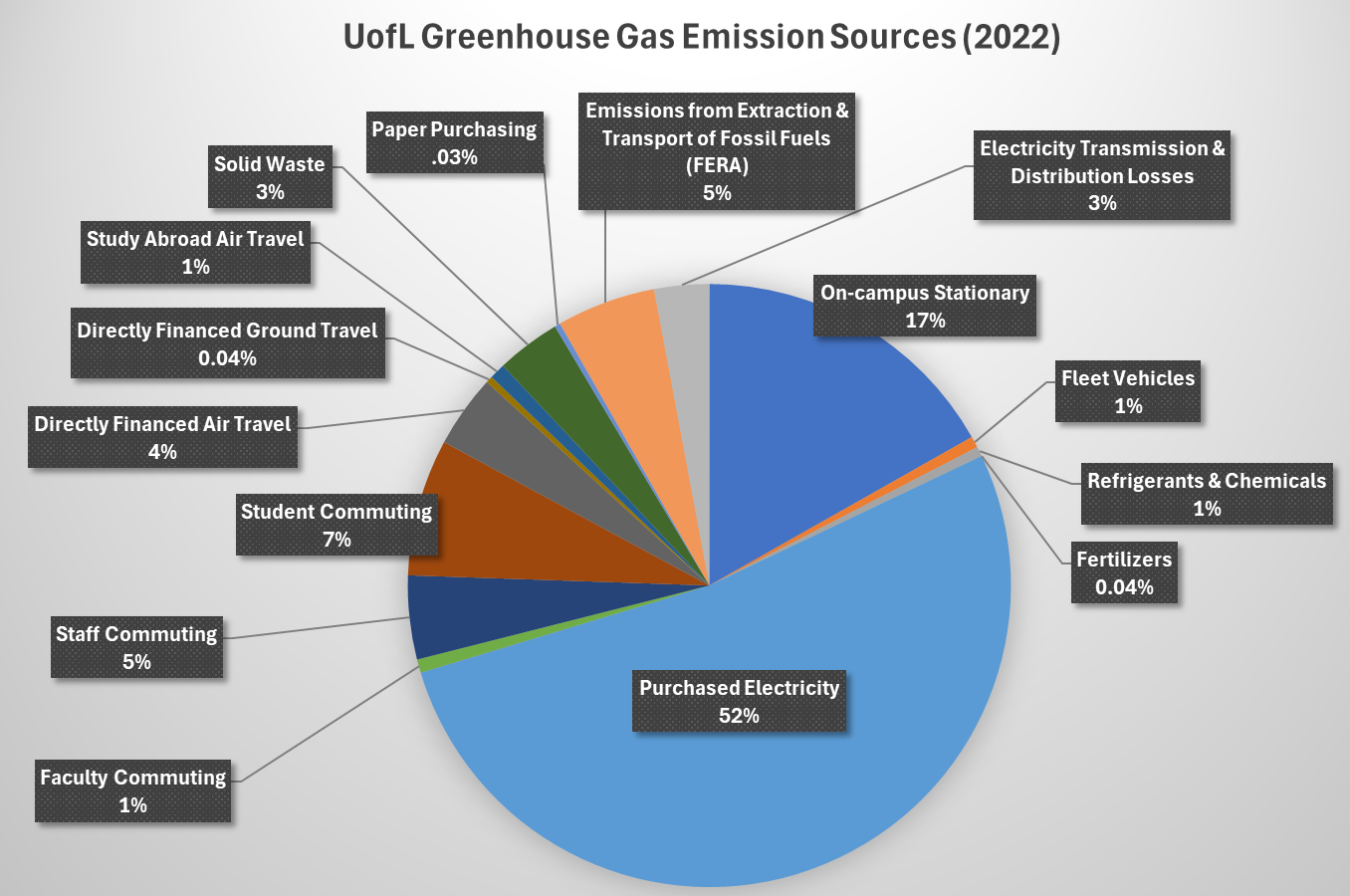President Schatzel signs Climate Leadership Commitment as UofL reduces carbon emissions by 53%
 On February 1, 2024, the University of Louisville's 19th President, Dr. Kim Schatzel, re-signed UofL onto the Carbon Commitment, reaffirming the university’s commitment to tackling the greatest crisis facing humanity. Read Dr. Schatzel's Climate Leadership Commitment here.
On February 1, 2024, the University of Louisville's 19th President, Dr. Kim Schatzel, re-signed UofL onto the Carbon Commitment, reaffirming the university’s commitment to tackling the greatest crisis facing humanity. Read Dr. Schatzel's Climate Leadership Commitment here.
This marks the third time in a row that a UofL President has made the pledge. UofL first became a signatory to the American College & University Presidents’ Climate Commitment in 2008 under President James Ramsey. The ACUPCC is now known simply as the Carbon Commitment. On August 4th, 2021, UofL's 18th President, Dr. Neeli Bendapudi, also signed the Carbon Commitment.
As a member of the Climate Leadership Network, the University of Louisville is committed to reducing greenhouse gas (GHG) emissions with the ultimate goal of achieving carbon neutrality by 2050 at the latest. Currently there are 444 U.S. schools who have made commitments in the Network, but only three others in Kentucky, and none that have made as much progress as UofL. Northern Kentucky University (13% reduction by 2017) and Centre College (15% increase by 2015) have made Carbon Commitments and Eastern Kentucky University (not reporting) made a Climate Commitment to both mitigate and adapt to climate change.
During the first decade of Climate Action, UofL was able to vastly exceed our goals laid out in the university's first Climate Action Plan, which was adopted on September 15, 2010. That Plan set a goal of reducing net carbon emissions by 20% by 2020. In fact, the university was able to achieve an over 35% reduction by that year and our latest Greenhouse Gas Emissions report indicates that we had achieved a stunning 53% reduction in carbon emissions from our 2008 baseline by the end of 2022, after dipping as low as 55% below baseline in 2021.
You can find all the details about UofL's greenhouse gas emissions reporting publicly available on the new Sustainability Indicator Management & Analysis Platform (SIMAP), or explore our full 2022 Greenhouse Gas Emissions Report.
From 2008 to 2022, we estimate that UofL’s net carbon emissions have declined by 53% from 218,540 to 99,906 metric tons/year.

In 2022, we stood at a 53% reduction from the 2008 baseline. UofL decreased emissions by 119,706 metric tons of CO2 equivalent per year since 2008. According to the EPA's greenhouse gas equivalencies calculator, this translates to:
- Taking 26,965 cars off the road, or over 290 million miles of driving, or 13 million gallons of gas burned;
- 39,340 tons (or 5,620 garbage trucks) of waste recycled instead of landfilled;
- Emissions from 14,775 average U.S. homes’ annual energy use;
- 623 rail cars worth of coal burned;
- Over 7 billion smartphones charged;
- Carbon sequestered by 32,279 acres of U.S. forests in one year; or 1,873,392 tree seedlings grown for 10 years; or 727 acres of U.S forests preserved from conversion to cropland in one year.
When we look over the long-term, UofL can be particularly proud of the fact that we have reduced our carbon emissions, even as we continue to grow in terms of physical size, campus population, and budgetary expenditures. In fact, UofL has achieved the following relative reductions in emissions over time:
| Per sq. ft. of building space |
Per Capita (Students+Employees) |
Per Operating Budget Dollar |
|
|---|---|---|---|
| Emissions Reduction 2008-2022 | 69% | 76% | 73% |

To reflect the past decade of experience and set new goals, during 2021-2022, UofL's Sustainability Council worked to produce a revised Climate Action Plan as a component of our new UofL Sustainability Plan: Pathway to Platinum. It is a comprehensive roadmap for reducing our emissions down to net zero. It was shared with the campus population for comment in January 2022 and a final draft was submitted to the administration on May 27, 2022.
From July 2022 - July 2023, this revised Climate Action Plan was integrated into the first comprehensive Campus Master Planning effort the university has conducted in 15 years. The Sustainability Council coordinates UofL's Climate Action Planning as well as the reporting of our greenhouse gas emissions.

Note: This story has been updated with revised carbon emissions estimates.



